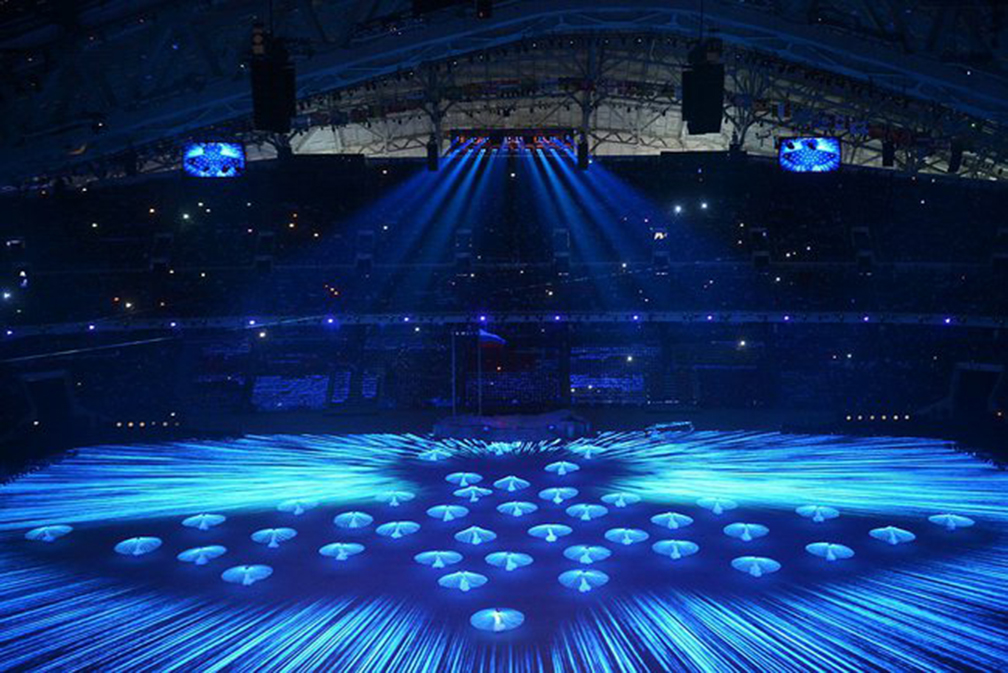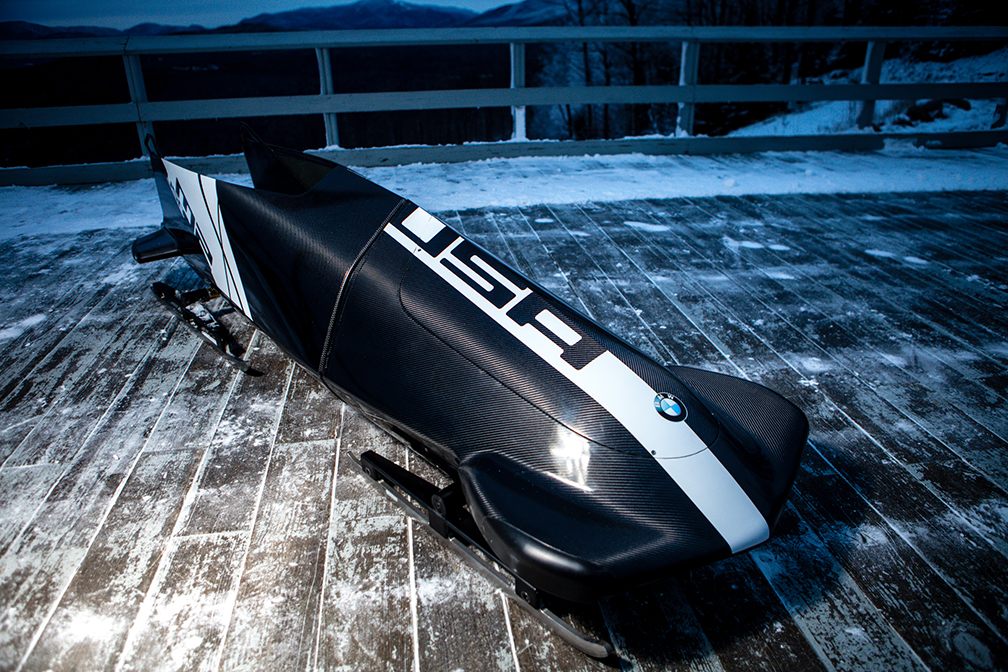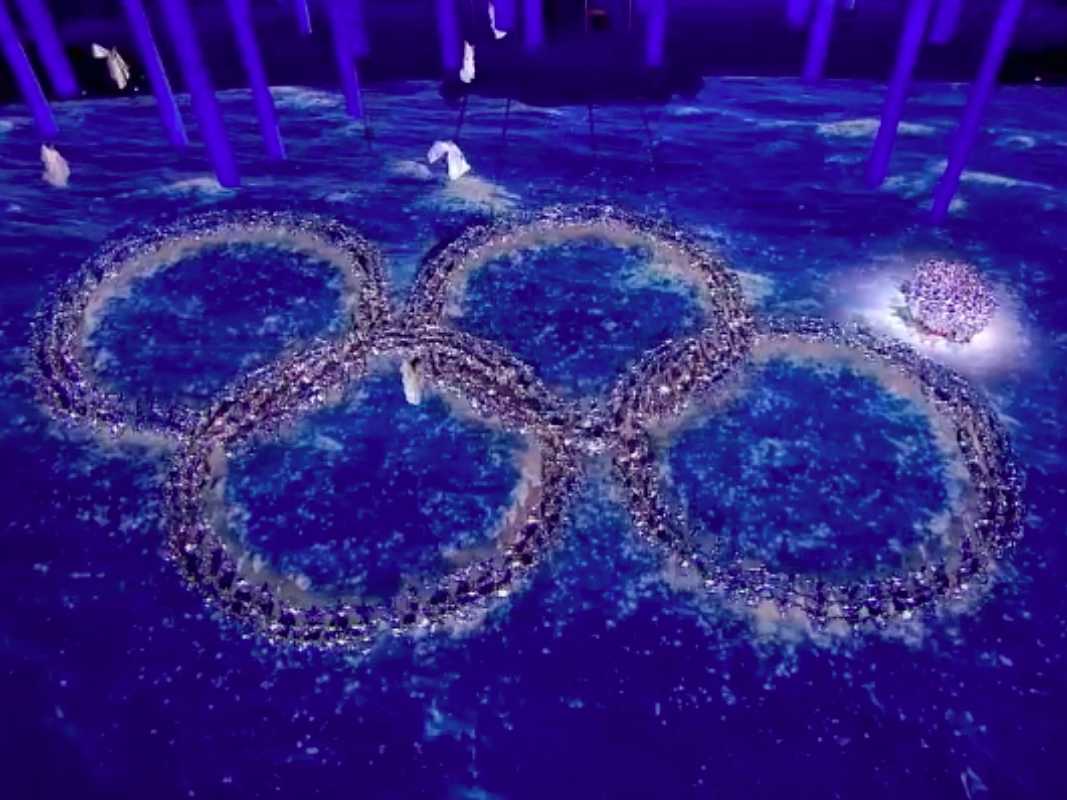As we watched the Winter Olympics in Sochi, Russia, come to a close, the overarching ideals of the Olympic Movement seemed fairly straightforward. The athletes swear to participate “in the true spirit of sportsmanship, for the glory of sport and the honour of our teams.”
Of course, the Olympics get infinitely more complicated to follow when we add the various dimensions of politics, personal drama, corporate sponsorship and scandals. The one side-intricacy that I found most fascinating to watch, however, is increasingly sophisticated role that technology plays in the Games, from the spectacle of the ceremonies, to the timing and scoring mechanisms, security systems, television coverage, clothing and equipment.
ceremonies, to the timing and scoring mechanisms, security systems, television coverage, clothing and equipment.
Technology was on display throughout Fisht Olympic Stadium on the first and last nights of coverage. Most prominently, 120 high-powered projectors turned the floor of the immense arena into “a sort of Imax screen,” framing the athletes with an enormous world map as they seemed to enter the stadium by emerging from their own country. Shortly thereafter, five immense illuminated mechanical snowflakes entered the stadium hanging from a huge gantry system, but a glitch allowed only four of the five snowflakes to transform into the Olympic Rings. Later, the projectors transformed the surface into a stormy ocean that was traversed by a ship symbolizing the imperial ambitions of Peter the Great. The final opening act, appearing to be just a simple torch lighting, involved a series of finely synchronized gas jets against the backdrop of a spectacularly choreographed fireworks display.
After spending northward of $50 billion to stage these Games, Russia the Olympic Committee wanted to make sure everything ran smoothly and everyone could watch the events, post pictures and share comments. The IT infrastructure in Sochi involved about 400 servers, 1,000 security network devices and 5,600 computers t hat provided various services, such as delivering competition results to a global audience in less than a second; providing real-time information to 9,500 members of the media; processing and activating accreditation badges for 200,000 staff, coaches and athletes; and assembling and processing data for more than 5,500 athletes. Officials prepared to handle up to 54 Tbps of Wi-Fi traffic from athletes, staff and members of the media – this doesn’t even count the thousands of spectators in attendance. Smartphone, tablet, laptop and even television apps allowed viewers to keep up on the medal count, check event schedules, view athlete biographies, and much, much more.
hat provided various services, such as delivering competition results to a global audience in less than a second; providing real-time information to 9,500 members of the media; processing and activating accreditation badges for 200,000 staff, coaches and athletes; and assembling and processing data for more than 5,500 athletes. Officials prepared to handle up to 54 Tbps of Wi-Fi traffic from athletes, staff and members of the media – this doesn’t even count the thousands of spectators in attendance. Smartphone, tablet, laptop and even television apps allowed viewers to keep up on the medal count, check event schedules, view athlete biographies, and much, much more.
Drones and other hi-tech security measures made a significant appearance at the Games; they were used extensively both for increased security, as well as for better camera angles at outside events that didn’t readily provide a superstructure for cameras. Authorities recorded Internet messages and phone connections of all Sochi visitors and traffic was strictly controlled in a huge zone around the Olympic grounds. Facial recognition systems were utilized, especially in high-traffic locations, such as train stations and airports.
 On the actual field of competition, technology was leveraged to increase athlete’s likelihood of standing on a medal podium. In one example, the United States took four of the nine medals in bobsledding, and the biggest difference this year? The U.S. Bobsled Federation teamed with BMW in 2010 to design and build new carbon-fiber sleds for Team USA (Italy has Ferrari design their sleds, and McLaren designs Britain’s). At BMW, an engineer uploaded some sketches to a computer, simulation experts created and tested five virtual models, engineers constructed and tested a pair of prototypes, and then BMW built six new competition sleds. While all sleds must weigh a prescribed amount, the carbon-fiber shell allowed engineers to reduce the size of the sled, lower its center of gravity and streamline the interior to improve how athletes jump into the sled.
On the actual field of competition, technology was leveraged to increase athlete’s likelihood of standing on a medal podium. In one example, the United States took four of the nine medals in bobsledding, and the biggest difference this year? The U.S. Bobsled Federation teamed with BMW in 2010 to design and build new carbon-fiber sleds for Team USA (Italy has Ferrari design their sleds, and McLaren designs Britain’s). At BMW, an engineer uploaded some sketches to a computer, simulation experts created and tested five virtual models, engineers constructed and tested a pair of prototypes, and then BMW built six new competition sleds. While all sleds must weigh a prescribed amount, the carbon-fiber shell allowed engineers to reduce the size of the sled, lower its center of gravity and streamline the interior to improve how athletes jump into the sled.
 Perhaps the most scrutinized technology aspect of the Winter Games has been the high-performance suits worn by the American speed skating team. Designed by UnderArmour in partnership with Lockheed Martin, the new suits – dubbed the Mach39s – are constructed from slightly dimpled nylon, polyester and spandex fabrics to mimic some flight characteristics of golf balls. Designers leveraged motion capture technologies, computational fluid dynamics and extensive wind-tunnel testing to create what was described as, “the most scientific suit in the whole world.” However, after the first six events, however, no American skater finished higher than fifth. With their confidence crushed, the entire team switched to an older set of Under Armour suits, but the mid-competition change brought no improvement in the standings over the remaining events.
Perhaps the most scrutinized technology aspect of the Winter Games has been the high-performance suits worn by the American speed skating team. Designed by UnderArmour in partnership with Lockheed Martin, the new suits – dubbed the Mach39s – are constructed from slightly dimpled nylon, polyester and spandex fabrics to mimic some flight characteristics of golf balls. Designers leveraged motion capture technologies, computational fluid dynamics and extensive wind-tunnel testing to create what was described as, “the most scientific suit in the whole world.” However, after the first six events, however, no American skater finished higher than fifth. With their confidence crushed, the entire team switched to an older set of Under Armour suits, but the mid-competition change brought no improvement in the standings over the remaining events.
The Closing Ceremonies again featured the amazing stadium projection system, as the Olympic Flags was passed along to officials from South Korea, site of the next Winter Olympic Games in 2018. The floor was transformed into the stage of Russia's two most famous ballet theaters, enormous pages of Russian Literature that virtually turned before our eyes and a sea of flickering mirrors moving across the landscape. Perhaps the most notable moment of the closing ceremonies came when a cast of thousands of dancers formed into the Olympic Rings with a choreography that mimicked the malfunctioning fifth ring from the Opening Ceremonies – a heartwarming, self-deprecating gesture that poked fun at one of the very few technical glitches at the Games.
ring from the Opening Ceremonies – a heartwarming, self-deprecating gesture that poked fun at one of the very few technical glitches at the Games.
The 17 days of the Winter Olympics were an amazing spectacle made even moreso through some fascinating technologies that allowed us to watch world-class athletic competition, on live television, from halfway across the planet, in super close-up slo-mo, with moment-by-moment updates on our smartphones and, thankfully, without interference by terrorists. Does technology occasionally fail us? Of course! The skaters didn’t trust their new suits. A snowflake didn’t transform into an Olympic ring. And, some early ticketing glitches caused some spectators to arrive late for their events. But, in context, the overall technology powering the Sochi Winter Olympics delivered a medal-worthy performance!



